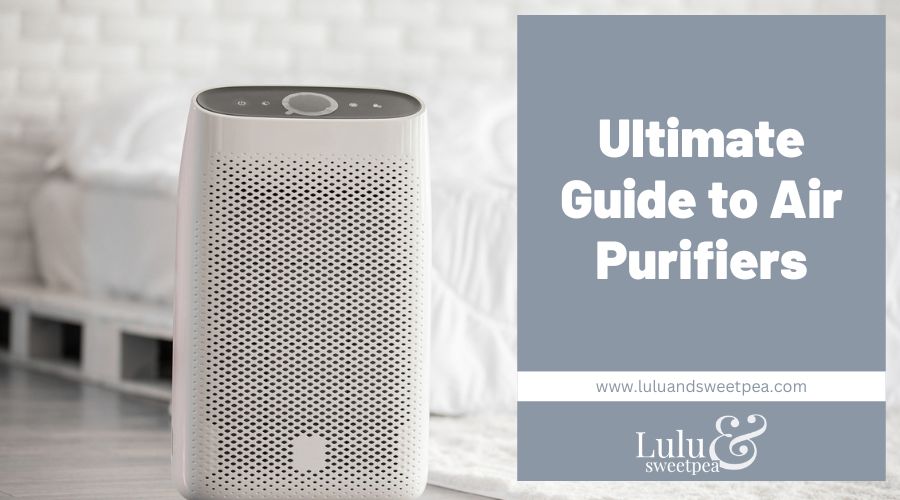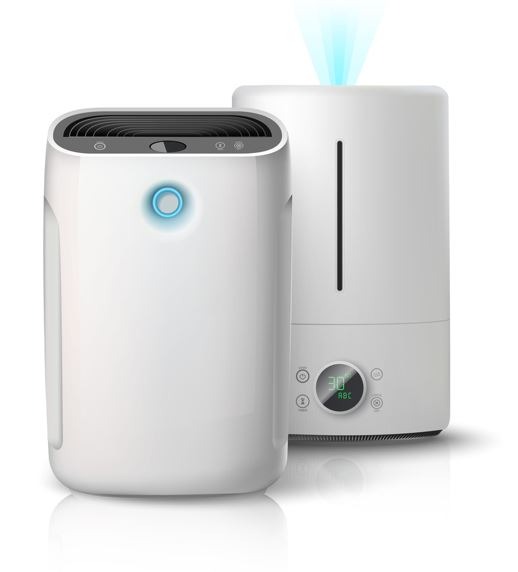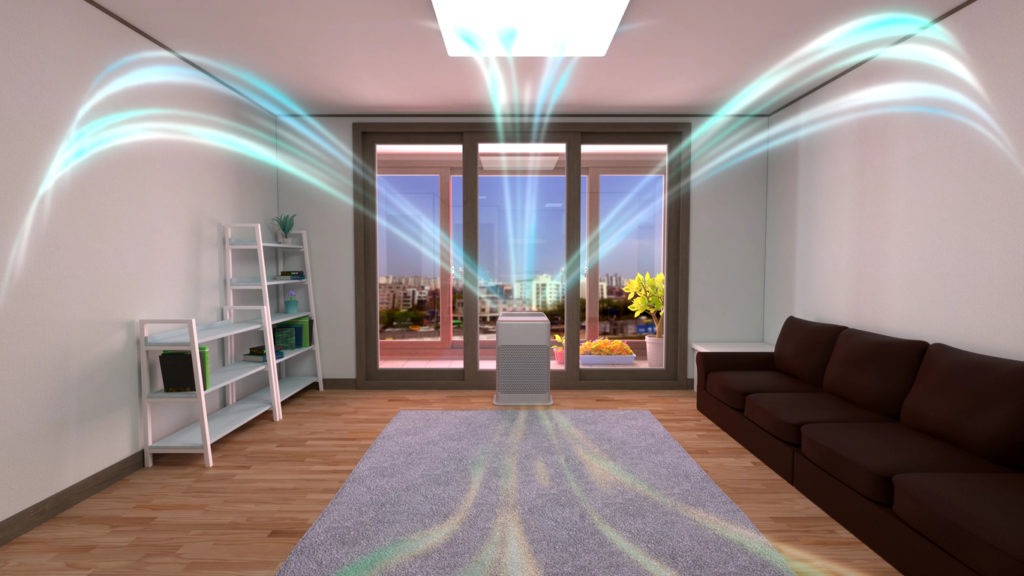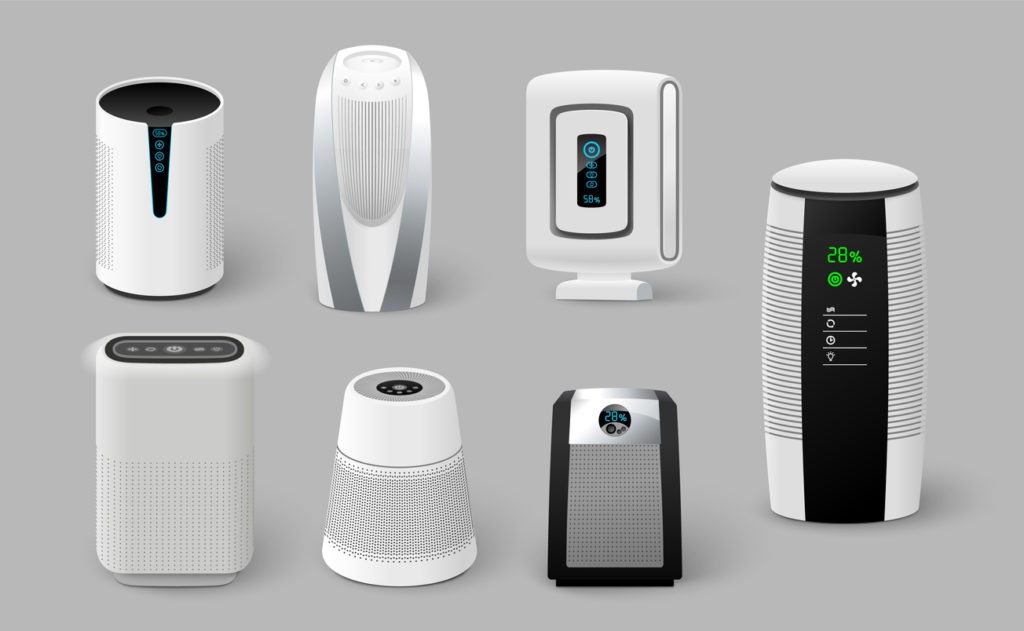Clean air is essential for your lungs, blood circulation, heart, and overall physical wellness, regardless of the season. However, it is likely that the air in your home is worse than you realize.
According to the Environmental Protection Agency, the quantity of certain contaminants is often two to five times higher inside than outside.
Fine particles of a diameter of 10 micrometers or less, such as those present in dust and smoke, are of particular concern because they can penetrate deeply into the lungs. Even a few hours of exposure is sufficient to irritate lungs and provoke asthma episodes. The inhalation of these particles has also been associated to heart attacks in those with heart problems. According to studies, prolonged exposure to high particle levels can induce bronchitis, reduced lung function, and even early death.
 What exactly is a purifier?
What exactly is a purifier?
An air purifier is a device that cleanses the air of particles or gases. There are various technologies for air filtration. We will offer them in the shape of their evolution over the previous seventy years.
Prior to the 1940s, efficient air filters did not exist. The U.S. government sought a gas mask that could filter out dangerous pollutants. What they later invented was the HEPA filter.
Respirators were the first air purifiers ever created. These are face masks worn for air filtration. A few more decades would pass before residential air purifiers became commonplace.
The National Institute for Occupational Safety and Health (NIOSH) establishes the air filtration criteria for respirators. Here’s the approved seven filter classes:
- N95: Filters 95% or more of particles
- N99: Filters a minimum of 99.999% of particles
- N100: Filters 99.97% or more of particles
- R95: Filters at least 95% of particles and has moderate oil resistance
- P95: Filters a minimum of 95% of particles and is oil-resistant
- P99: Filters a minimum of 95% of particles and is oil-resistant
- P100: Filters 99.97% or more of particles and is resistant to oil
Why is an air purifier essential?
Using an air purifier is the greatest way to clean indoor air, which can be contaminated and full of allergens such as pollen and dust. They contribute to the upkeep of a healthy environment by eliminating ragweed, mold spores, and other pollutants.
Here is a list of various requirements that an air purifier can address:
Allergies: If you have allergies, you should choose an air purifier designed to alleviate your symptoms. Frequently, they have many filters, including HEPA filters, to remove allergens from indoor air.
Consider an asthma air purifier or an odor and chemical air purifier if you have asthma or if odor and chemical pollution triggers your symptoms. In addition to HEPA filters for eliminating allergen particles, these air purifiers also filter out odors and chemicals.
Smoke: Smoke air purifiers are designed to eliminate smoke, fireplace soot, and other pollutants that can aggravate preexisting respiratory conditions or cause unpleasant odors.
Pets: Some air purifiers are designed specifically to eradicate pet odors, dander, and hair. Here you can find air purifiers for dogs.
Chemical Intolerance: If you are chemically sensitive and have many chemical sensitivities, you may wish to try an air purifier (MCS). These models often employ materials that will not discharge pollutants into the air and exacerbate your symptoms, and they include enhanced odor and chemical filtration.
Why you should be concerned with indoor air quality?
Indoor and outdoor air pollution are measured by the World Health Organization. They report that indoor air pollution causes the deaths of almost 4 million people annually. This amount exceeds those caused by outdoor pollution.
Granted, the bulk of these cases are from Asia, where indoor cooking is prevalent. However, it is absurd to believe that number exceeds the total population of Los Angeles. Each year.
In the United States, research based on air quality monitoring indicate that interior air pollution is two to five times more hazardous than outside air pollution. If you smoke indoors, it can be up to 100 times.
Why is it so?
There is not just one explanation; rather, there are several possibilities.
- Most of our time is spent indoors.
- We are obsessed with energy-efficient homes. Air conditioning and heating expenses frequently account for at least 50 percent of our energy expenditure. Therefore, it makes sense to save.
- Consequently, our dwellings are airtight Since there is no way for air to get in or out, the air inside gets stale and dirty. We resolved one problem while creating another.
What effective air purifiers do?
The air purifiers that performed well in Consumer Reports’ lab testing are effective at filtering out dust, smoke, and pollen. Multiple tests on room air purifiers demonstrate that HEPA filters reduce particle matter by at least 50 percent. In a 2018 study of over 130 households, filtration reduced coarse particles such as dust by approximately 30 percent.
However, how does this impact your health? Nearly a dozen studies, including those conducted in Vancouver, British Columbia, Taipei, Taiwan, and Somerville, Massachusetts, examined the cardiovascular effects of air purification and found that participants enjoyed enhanced cardiovascular health. A study of eight research by the EPA revealed that filtered air had small health benefits in at least one area, such as allergy symptoms. And participants with asthma in a 2018 study conducted by the University of California, Davis reported a 20% reduction in clinic visits.
However, there are exceptions. The scientific and medical communities have not conclusively linked the usage of air purifiers to health advantages due to the inconsistency of participant-reported health benefits and the paucity of long-term studies. In addition, additional variables, including as the regular use of a vacuum cleaner (CR may help you select one) or protective pillow coverings, and the removal of dogs from the bedroom, can impact the results of some research.
As for the coronavirus, air purifiers with HEPA filters are able to capture the virus-carrying droplets (when people cough, talk, or breathe). However, it must continually draw in sufficient air to dramatically reduce virus particles.
Selecting The Proper Air Purifier for The Size of the Room
The first step in screening out air purifiers (no pun intended) is determining the size of the area you wish to clean. Small desktop units are ineffective in large living areas, while larger, heavy-duty air purifiers may be excessive for your child’s bedroom.
“air changes per hour” is one method for locating the optimal match. This measure may be mentioned in the specifications of your air purifier. The fact that a smaller air purifier can change the air in a 350-square-foot room eight times per hour but only four times per hour in a 700-square-foot room can help illustrate how filtration works in practice.
How to select the ideal air purifier?
1) Search for a pre-filter — Air contains dense particulate matter; consequently, your machine should have a pre-filter to remove these particles. It is essential that your purifier filter out harmful contaminants.
2) Activated carbon layer – This is the next component to search for in your machine. Activated carbon is a porous material that readily absorbs the majority of gaseous pollutants.
3.) HEPA Filter – Consider your machine to be worthless if it does not include a high-quality HEPA filter. The US Department of Energy states that HEPA (High Energy Particulate Air) can/must eliminate at least 99.97% of airborne contaminants measuring 0.3 micrometers.
4) Say no to ozone-emitting equipment – Avoid any purifier technology that releases ozone. Even relatively modest levels of ozone, according to the EPA (US Environmental Protection Agency), can induce chest pain, coughing, shortness of breath, and throat irritation. According to a 2002/03 Consumer Reports report, ionizing air purifiers provided “virtually no reduction in airborne particulates.” Ionizing and ozone air purifiers are potentially harmful to human health.
5) Technologies to avoid – UV filtration, ionization, and photocatalytic oxidation are technologies you should not seek for in a purifier. Some of these generate ozone, while the others are capable of targeting microorganisms that can create a too sterile atmosphere, thereby lowering your immunity.
6) Determine your machine’s CADR (Clean Air Delivery Rate) – A greater number will indicate superior filtration. On your product will be listed three CADR values for smoke, dust, and pollen, respectively. Additionally, it is essential to know at what fan speed your filtration is approved. It will produce a great deal of noise if it is discussed rapidly. Your purifier is efficient if it effectively cleans and purifies at a low or moderate fan speed.
7) The proper filter – The quality and size of filters must always be considered. If your filter becomes clogged frequently, it will not be cost-effective to change it frequently.
8.) Make wise decisions – Determine your needs and the size of the space that need purification. Central purification will necessitate the installation of larger machines or purifiers as part of the central cooling, heating, and ventilation system (HVAC). It is a once-in-a-lifetime purchase, so you should consider both your current and your ever-growing future needs.
Types of Air Purifiers
There are numerous technologies employed by air purifiers to reduce indoor pollution. Some are more effective than others. And some may be harmful to your health.
Mechanized filtration: Air purifiers with mechanical filters are the only air purifiers that CR tests. Fans drive air through a dense web of thin fibers that catch particles in air purifiers. Filters with very small mesh are termed HEPA filters, which are certified to catch 99.97 percent of particles of a specified size (0.3 micrometers in diameter—particulate matter in smoke and volatile organic compounds in paints, for example). HEPA filters may also remove bigger airborne particles, such as dust, pollen, and some mold spores. (Note that certain filters branded “HEPA-type” or “HEPA-like” have not been certified to fulfill the specifications of a true HEPA filter but may nevertheless function properly in our tests.)
Regarding limits, mechanical filters are ineffective against gases and odors. And they can be pricey to maintain. Mechanical filters need to be updated every six to 12 months; they can cost up to $200 per filter but normally cost no more than $80.
Carbon-activated filters: These filters, unlike mechanical filters, use activated carbon to trap particular types of gases, including chemicals that cause odor. However, they are ineffective against formaldehyde, ammonia, and nitrogen oxide. Because activated carbon filters are ineffective against particles, many air purifiers have both an activated carbon filter and a mechanical particle filter. However, activated carbon filters become saturated more quickly than mechanical filters, necessitating replacement every three months as compared to every six to twelve months for mechanical filters. Prepare an appropriate budget for replacements: Each activated carbon filter can cost up to $50.
Ozone generators: These machines produce ozone, a molecule that can react with certain contaminants to alter their chemical composition. This can lead to hazardous indoor air quality; hence CR does not suggest these air purifiers. Manufacturers of ozone generators frequently assert that the devices generate safe levels of ozone, however our previous testing indicated that even at low settings, some ozone generators immediately surpassed the Food and Drug Administration’s 0.05 ppb guideline for medical equipment. In addition, EPA-reviewed research indicates that low amounts of ozone, the principal component of smog, do not effectively eliminate indoor contaminants. Ozone has also been associated to decreased lung function and higher risks of throat irritation, coughing, chest pain, and lung tissue inflammation, according to research. Exposure to ozone may also exacerbate asthma, emphysema, and bronchitis.
Electrostatic precipators and ionizers: In these electronic versions, particles in the air become charged such that they stick—magnet-like—to plates on the machine or to neighboring surfaces. CR doesn’t normally test electronic air purifiers or recommend them, because they can produce ozone.
Ultraviolet germicidal irradiation (UVGI): Some manufacturers assert that their air purifiers use UV lamps to eliminate airborne viruses, bacteria, and fungal spores. However, certain UV-resistant bacteria and mold spores may escape their attention. To be effective, the UV light must be strong enough and the exposure must endure long enough—minutes to hours, as opposed to the seconds required by conventional UVGI air purifiers. UVGI technology is not tested by CR, though some of the mechanical air purifiers we evaluate may have this function.
Some air purifiers use UV radiation and a photocatalyst, such as titanium dioxide, to generate hydroxyl radicals that oxidize gaseous contaminants. This process can yield toxic byproducts such as ozone, formaldehyde, nitrogen dioxide, and carbon monoxide, depending on the pollutant. CR does not currently test PCO-equipped air purifiers. There have been few field studies examining the performance of PCO air purifiers, but one laboratory study, done by researchers at Syracuse University in New York, concluded that the devices were ineffective at removing any of the VOCs normally present in indoor air.
Molekule introduced in 2017 a variation of PCO termed as photoelectrochemical oxidation (PECO) in 2017. The Molekule Air purifier performed poorly in our testing for removing dust, smoke, and pollen. Since then, we’ve also evaluated the pricier Molekule Air Pro, which fared better at eliminating impurities on its highest setting but did not stand out in CR’s other air-purifier testing categories.
In conclusion
air purifiers can revitalize stale air, hence decreasing the likelihood of health problems caused by indoor contaminants, which can cause respiratory infections, neurological disorders, or exacerbate asthmatic symptoms. Multiple forms of indoor air contaminants are eliminated by high-quality air purifiers, keeping us healthy.
For more tips and recommendations, you may also read our Guide to Selecting an Air Purifier.

 What exactly is a purifier?
What exactly is a purifier?
